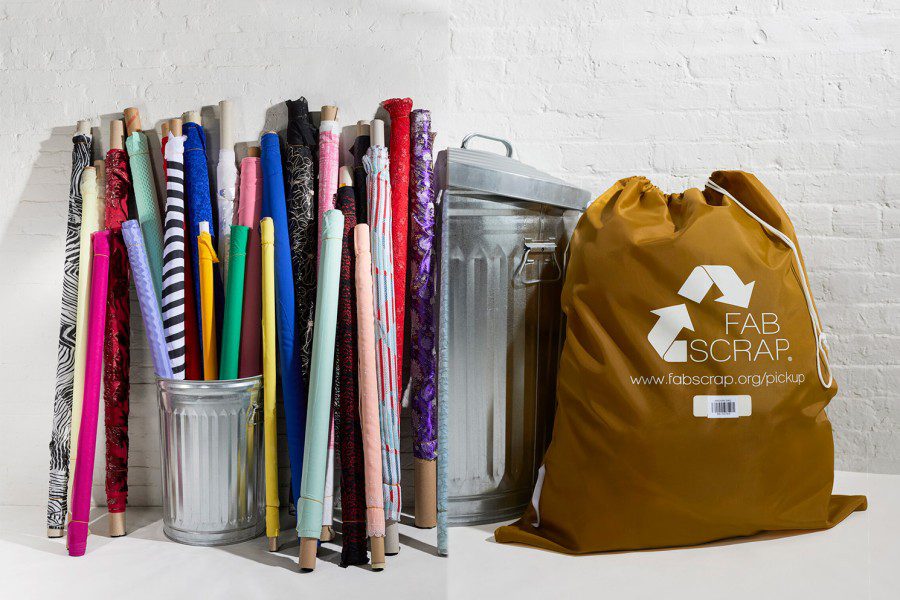FABSCRAP fashionably rethinks textile waste
The sustainable company makes fashion eco-friendly by saving millions of pounds of fabric waste.
October 12, 2022
When New York Fashion Week kicked off on Sept. 9, the New York and Philadelphia-based organization FABSCRAP made its way into the public eye as the textile provider for sustainable brands. Its largest clients were those showing on the runway of IMPACT, a nonprofit NYFW platform that shows exclusively eco-friendly designers.
More than a million pounds of fabric waste has gone into circulation in FABSCRAP — a colossal amount for an organization that has yet to reach its sixth anniversary. The saved materials are processed for resale or shredded into fabric stuffing for a variety of purposes.
The non-profit has its own warehouse in Brooklyn. It’s somewhat of a hidden gem, located close to the bleak grounds of Brooklyn Army Terminal. Upon arrival, one of FABSCRAP’s volunteers kindly offered to let me browse through the textile collection — referred to as the “shopping space.”
The shopping space was a wonderful array of colors, with rolls of brown, orange and maroon leather laid on metal stacks. Fabrics sorted by print, color, texture and size rested in cabinets or were carefully folded and rolled up in big trash bins. Silk was draped over a center table while cotton, tweed and fleece lined the walls. Buttons peeked out of translucent Ziploc bags. All items were labeled clearly with their prices, and most cuttings were five dollars per pound.
Despite the sheer amount of fabrics, it wasn’t hard to find something unique. I fished around the pink scrap bin and pulled out a piece of pink tulle, embroidered with flowers and covered in iridescent pearls and sequins. It looked like it was cut straight out of a Teuta Matoshi dress.
A larger and livelier room than the shopping space held modified garments, clothing with alterations and pieces of fabric missing that were selling for five dollars per pound. The vibrant racks of modified garments appeared like ready-to-wear clothing, reflective of their ability to transform for the runway.
Beside the door, volunteers were busy at work over rows and rows of white tables, fabrics splayed over the surfaces. Their job is to sort the textiles — lycra from elastane, cotton from wool. Then, whatever can be recycled or reused will be sold or shredded into stuffing.
Curious about the workload of a participant in the organization, I stopped Chris, a long-time volunteer at the warehouse. She describes the volunteering process as “addictive,” with her typical work day starting at 9 a.m. and ending at noon. During her three-hour shift, she guides customers around the store, sorts textiles and gathers ideas for her own craft. By the end of her session, she gets to pick out five pounds of fabric to take home for free.
“There’s a very good sense of community here,” Chris said. “Everyone’s working for a common good. Volunteering here is an opportunity to both leave my house and get inspired to make garments from new fabrics.”
Casey, an employee that works primarily with inventory, echoes Chris. Working at FABSCRAP makes them feel good to be leaving a sustainable impact on the fashion industry. Back when Casey was in fashion school, she shopped frequently at the organization. Then, when she saw that FABSCRAP had an internship position open, she applied and loved it so much that she began working full-time.
One of Casey’s favorite parts about working at FABSCRAP is getting to see what winds up as waste in the fashion industry. During one of her first days, she was sifting through some pieces of textile when she encountered a winter coat in almost perfect condition.
“It’s interesting to see what comes in determined as trash in the warehouse,” she said.
There are many reasons why brands, customers and employees dote over FABSCRAP. The organization stands as a novel interpretation of fashion — not luxurious but thought-provoking, working towards the greater good of the planet.
“Fashion isn’t all about being grandiose,” Casey said. “It’s about style and what interests you, and the perfectly cool thing about sustainability and fashion is that there’s so many ways to do it.”
Contact Linsey Lao at [email protected]
























































































































































